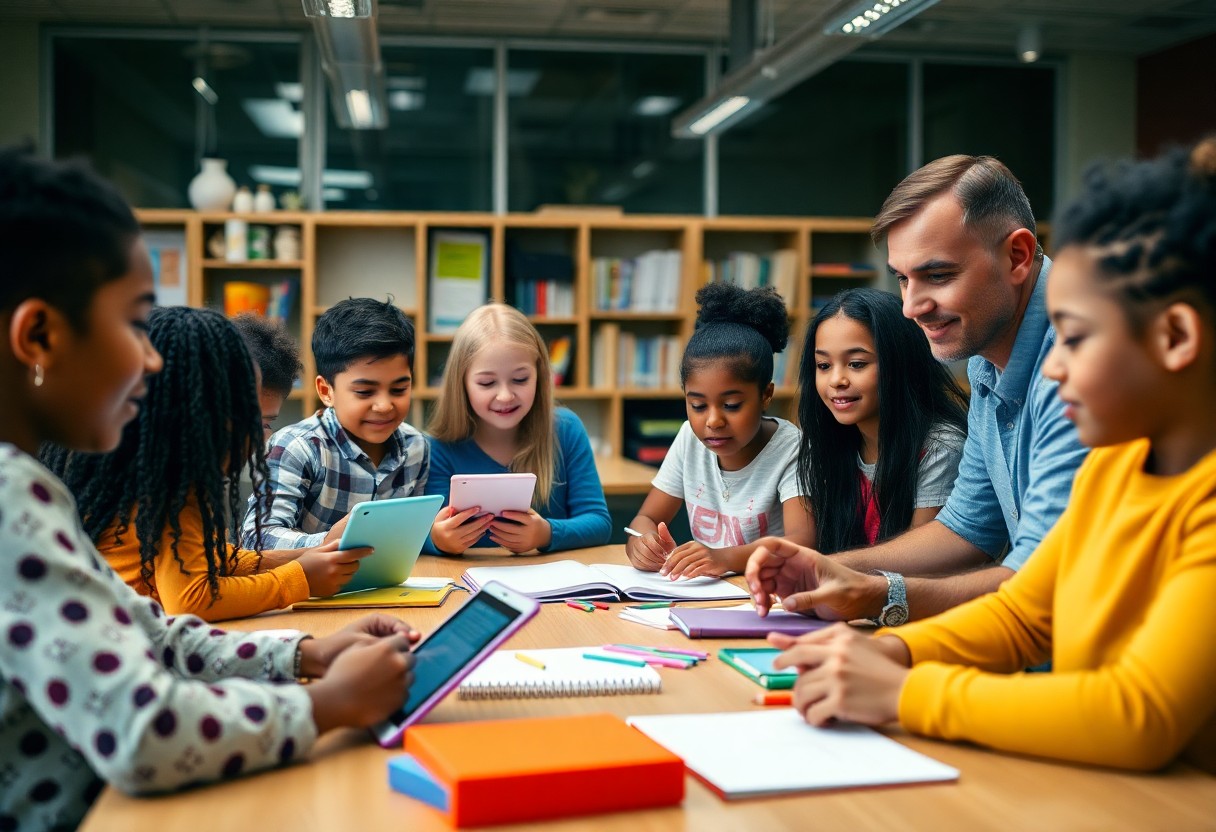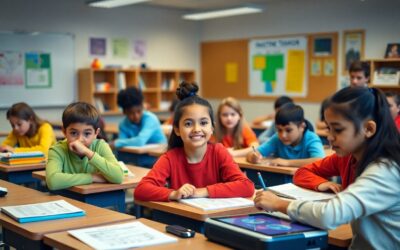With the rise of personalised learning, you can significantly enhance your educational experience and outcomes. This approach tailors learning experiences to fit your individual needs, preferences, and strengths, enabling you to grasp concepts more effectively. By focusing on your unique learning style, personalised learning fosters engagement, motivation, and deeper understanding, ultimately leading to improved academic performance. In this blog post, you’ll discover the key benefits of personalised learning and how it can transform your educational journey.

Understanding Personalised Learning
Your understanding of personalised learning is crucial for maximizing student success. This educational approach tailors learning experiences to meet individual needs, preferences, and interests, enabling students to engage more deeply with the material. By acknowledging that every learner is unique, personalised learning fosters an environment where students can thrive and reach their full potential.
Definition and Key Principles
With personalised learning, you can create a learning experience that prioritizes each student’s strengths and learning styles. Core principles include flexibility in pace and content, active involvement in the learning process, and continuous feedback. This approach not only enhances engagement but also promotes a sense of ownership over one’s educational journey.
Benefits of Personalised Learning
Besides improving engagement and motivation, personalised learning equips you with tailored resources to support your unique learning path. It allows you to progress at your own pace, ensuring mastery of topics before moving on, which can lead to better retention and understanding of the subject matter.
To further explore the benefits of personalised learning, you can see how it promotes critical thinking and problem-solving skills by challenging you with tasks that match your abilities. This targeted approach also fosters a reduced sense of frustration, as you can navigate learning challenges at a comfortable pace. Ultimately, personalised learning not only enhances academic performance but also cultivates a lifelong love for learning as you become more invested in your educational journey.
Impact on Student Engagement
You may find that personalized learning significantly enhances student engagement by catering to individual needs and interests. When students feel their unique preferences are being addressed, they are more likely to participate in discussions, collaborate with peers, and take ownership of their learning journey. This level of engagement fosters a positive learning environment where students are eager to explore and absorb new concepts.
Tailoring Learning Experiences
At the heart of personalized learning is the ability to tailor experiences to match each student’s strengths, weaknesses, and interests. By offering a range of learning modalities, such as visual, auditory, and kinesthetic approaches, you empower students to engage with material in a way that feels most natural to them. This customization not only improves comprehension but also fosters a sense of connection to the content.
Increasing Motivation and Interest
Increasing the motivation and interest of students is another vital component of personalized learning. When lessons align closely with students’ personal goals and passions, they are more inclined to participate actively in their education. This intrinsic motivation leads to deeper engagement and a more profound connection to the subject matter.
To further enhance motivation, you can incorporate real-world applications and relevant topics into lessons, making them more pertinent to students’ lives. By linking content to their personal experiences and aspirations, students become more invested in their learning process. Additionally, providing opportunities for choice and self-direction fosters autonomy, encouraging them to overcome challenges and pursue subjects with enthusiasm. Ultimately, this tailored motivation leads to improved academic performance and a lifelong love of learning.
Enhancing Academic Performance
Assuming you adopt personalized learning strategies, you’ll likely witness a significant boost in academic performance. By tailoring educational experiences to meet individual needs, you ensure that each student can engage with the material at their own pace, fostering deeper understanding and retention of knowledge. This targeted approach not only enhances motivation but also leads to improved test scores and academic success.
Individual Learning Paths
An effective personalized learning system allows you to create individual learning paths tailored to each student’s strengths and weaknesses. This means you can adapt your teaching methods and resources based on the unique needs of your learners, ensuring they grasp concepts more effectively. The flexibility of individual learning paths helps students stay engaged and makes their educational journey more relevant.
Measurable Outcomes and Assessments
Along with personalized learning, it’s necessary to incorporate measurable outcomes and assessments to track progress effectively. By setting clear objectives and regularly evaluating student performance, you can gauge the effectiveness of your strategies and make data-driven adjustments to improve learning experiences.
Further, using a combination of formative and summative assessments allows you to gather comprehensive data on each student’s progress. This not only helps you identify areas for improvement but also empowers students to take ownership of their learning journey. Additionally, automated data collection tools can streamline the assessment process, enabling you to focus more on teaching and less on paperwork, ultimately leading to an enhanced educational experience.
Addressing Diverse Learning Needs
Many students come from varied backgrounds and possess different abilities, making it crucial to tailor educational approaches to meet their unique requirements. By adopting personalised learning strategies, you can help ensure that every student’s learning needs are met effectively, creating a more inclusive and engaging environment. This not only helps in identifying the specific challenges they may face but also fosters personal growth and academic success.
Support for Different Learning Styles
After identifying your students’ individual learning styles, you can create lessons that resonate with them. Whether they thrive through visual aids, auditory explanations, or kinesthetic activities, personalisation allows you to structure your teaching methods to suit each student’s preferences. This adaptability increases engagement, retention, and ultimately leads to improved academic performance.
Accommodating Special Educational Needs
One of the primary benefits of personalised learning is its ability to accommodate students with special educational needs. Tailoring your teaching methods, materials, and assessments to their individual challenges allows them to access the curriculum in meaningful ways, paving the path for success.
Special attention to students with special educational needs can significantly enhance their learning experience. By implementing personalised support systems, such as modified lesson plans or assistive technology, you empower these students to participate actively in their education. Regular assessments and open communication with parents and support staff further ensure that you are meeting their evolving needs, thus fostering an environment where all students can thrive academically and socially.
Implementation Strategies
All successful implementation strategies for personalised learning emphasize collaboration among educators, technology, and data analytics. By fostering a culture of continuous improvement, you can create a tailored educational experience that meets individual student needs. Employing strategies like flexible grouping, differentiated instruction, and regular assessments will ensure that you provide the right support and resources for every learner.
Technology in Personalised Learning
Around the globe, innovative technologies are reshaping how personalised learning is delivered. Adaptive learning software, learning management systems, and data analytics tools allow you to customize instruction based on student performance and preferences, ensuring a more engaging learning experience that effectively supports each student’s unique path to success.
Teacher Training and Development
Personalised learning requires ongoing support and development for educators. With dedicated training programs, you can build the necessary skills to implement personalised strategies effectively. This training empowers you to utilize data, understand diverse learner profiles, and develop tailored instructional methods to elevate student engagement and achievement.
Also, investing in teacher training creates a supportive environment where you can collaborate and share best practices with your peers. Continuous professional development opportunities, mentorship programs, and workshops will enhance your understanding of personalised learning frameworks and equip you with the tools needed to foster a dynamic and adaptable classroom. This commitment to growth not only benefits your professional journey but ultimately leads to improved outcomes for your students.
Challenges and Considerations
After launching on the journey of personalised learning, you may encounter several challenges that require careful consideration. Implementing such a model demands an understanding of diverse student needs, teacher training, and effective use of technology. Additionally, navigating the balance between personalisation and standardised curricula can be complex. It’s vital to identify potential pitfalls and strategise accordingly to ensure that personalised learning truly enhances student outcomes.
Resource Allocation
Against the backdrop of personalised learning, resource allocation becomes a significant challenge. You must consider the distribution of financial, human, and technological resources to support individualised approaches effectively. Ensuring that all students have equal access to personalised tools may require creative budgeting and strategic planning, which can be daunting but worthwhile in the long run.
Balancing Standardisation with Personalisation
Standardisation in education often helps maintain a baseline of learning, but you may find that this can clash with the personalised methods you wish to implement. The challenge lies in finding a harmonious balance that allows for the benefits of standardised assessments while also embracing the unique needs of each student. This balance is key to creating a more inclusive and effective learning environment.
Hence, achieving the right mix of standardisation and personalisation requires intentional planning and execution. You can design flexible curricula that accommodate personalised learning paths while still meeting standardised benchmarks. Collaborating with educators, engaging in continuous assessment, and using data analytics will aid in tailoring your approach to benefit all students while ensuring that vital learning goals are met. This dual strategy not only enhances educational outcomes but also fosters an environment of equity and inclusivity.
Conclusion
Hence, by implementing personalized learning strategies, you can significantly enhance student outcomes. Tailoring education to meet individual needs fosters greater engagement, motivation, and academic achievement. Additionally, as you adopt personalized approaches, you empower students to take ownership of their learning, ultimately leading to a more successful and fulfilling educational experience. Embracing these methods will not only benefit students academically but also develop their critical thinking and problem-solving skills, preparing them for future challenges.
Q: How does personalised learning cater to individual student needs?
A: Personalised learning accommodates the unique strengths, weaknesses, learning styles, and interests of each student. By employing techniques such as assessments to identify individual capabilities, educators can tailor teaching methods and resources. This approach not only enhances engagement but also ensures that students progress at their own pace, ultimately leading to improved comprehension and retention of material.
Q: In what ways does personalised learning foster student motivation?
A: Personalised learning encourages intrinsic motivation by allowing students to take ownership of their educational journey. When learners are given the freedom to choose topics that resonate with them or set achievable personal goals, they often experience a heightened sense of investment in their studies. This increased motivation can lead to a more active engagement in learning, contributing to better academic outcomes.
Q: What role does technology play in personalised learning?
A: Technology is a significant enabler of personalised learning, providing tools that facilitate individualised instruction. Platforms equipped with adaptive learning algorithms can analyse student performance in real-time and suggest customised resources or activities tailored to their needs. Additionally, technology allows for a more flexible learning environment, enabling students to access materials and support outside traditional classroom hours, reinforcing their learning experience.




0 Comments